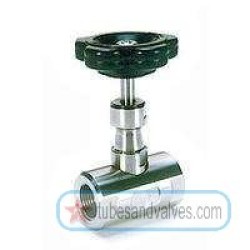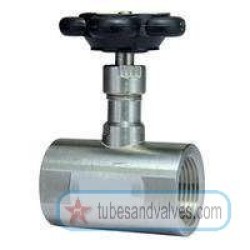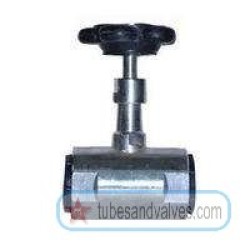Needle Valve
A needle valve is a type of valve that is used for regulating the flow of a fluid by turning a needle-like plunger to open or close small openings inside the valve. Needle valves are usually made of brass, stainless steel, or other special alloys for enhanced strength and durability. Needle valves are widely used in a variety of industries, from the chemical to the process industries, for controlling the flow of liquids, gases, and steam.
Applications of Needle Valves
Most needle valves are used in applications that require precise, adjustable, manual flow control. Examples of such applications include regulating the pressure in a process system, measuring the flow of a fluid, controlling the level of a vessel, and controlling the temperature of a process. Needle valves are also used in fuel injection systems, hydraulic systems, and high-pressure systems.
Construction of Needle Valves
Most needle valves have a body constructed of brass, stainless steel, or other materials depending on the application and operating temperature. Inside the body is a threaded stem that rotates to open or close a port that is called a needle. The needle is a conically-shaped, cylindrical plug with an orifice or passage that intersects the main flow line, allowing the flow to be regulated. The flow rate can be adjusted by varying the position of the needle in the orifice and when the needle is fully closed, no flow can pass through the port.
Features of Needle Valves
Needle valves have several features that make them ideal for precise flow control. The needles are typically made of more durable materials, enabling them to last longer and provide more precise flow control than other valve types. Additionally, the slim design of the valve requires minimal space and can be mounted in tight locations. It is also highly resistant to vibration and shock, making it a great choice for demanding environments. It also provides excellent control over the rate of flow and is relatively low maintenance.
Types of Needle Valves
Needle valves are available in a variety of designs including needle-globe, angle-globe, compression, fixed, and variable orifice. Needle-globe valves combine the features of both a needle and a globe valve, allowing for precise flow control. Angle-globe valves are designed for applications that require a large variation in flow rate, such as steam service, and are suitable for throttling and shutoff. Compression valves are designed for applications that require a low-pressure valve with the ability to precisely control flow rate. Finally, fixed and variable orifice valves are designed for applications that require varying levels of flow control.
Advantages of Needle Valves
Needle valves offer several advantages over other valve types, such as their size, precise flow control, and durability. They are also low maintenance, have low installation costs, and can be used in a variety of applications. Additionally, needle valves are relatively inexpensive and can be used in a wide range of temperatures and pressures.
Conclusion
Needle valves are an advantageous choice for many applications requiring precise manual flow regulation. They are available in a variety of designs, including needle-globe, angle-globe, compression, fixed, and variable orifice. Additionally, they offer many benefits, such as low installation costs, precise flow control, low maintenance, and durability. Needle valves are an ideal choice for many types of industrial and process applications.
FAQs for Needle Valve
FAQs for Needle Valve
What is a needle valve?
A needle valve is a type of valve that has a long, tapered needle-like stem that is used to regulate the flow of fluid through the valve.
What are the applications of needle valves?
Needle valves are commonly used in applications where precise control of flow is required, such as















































